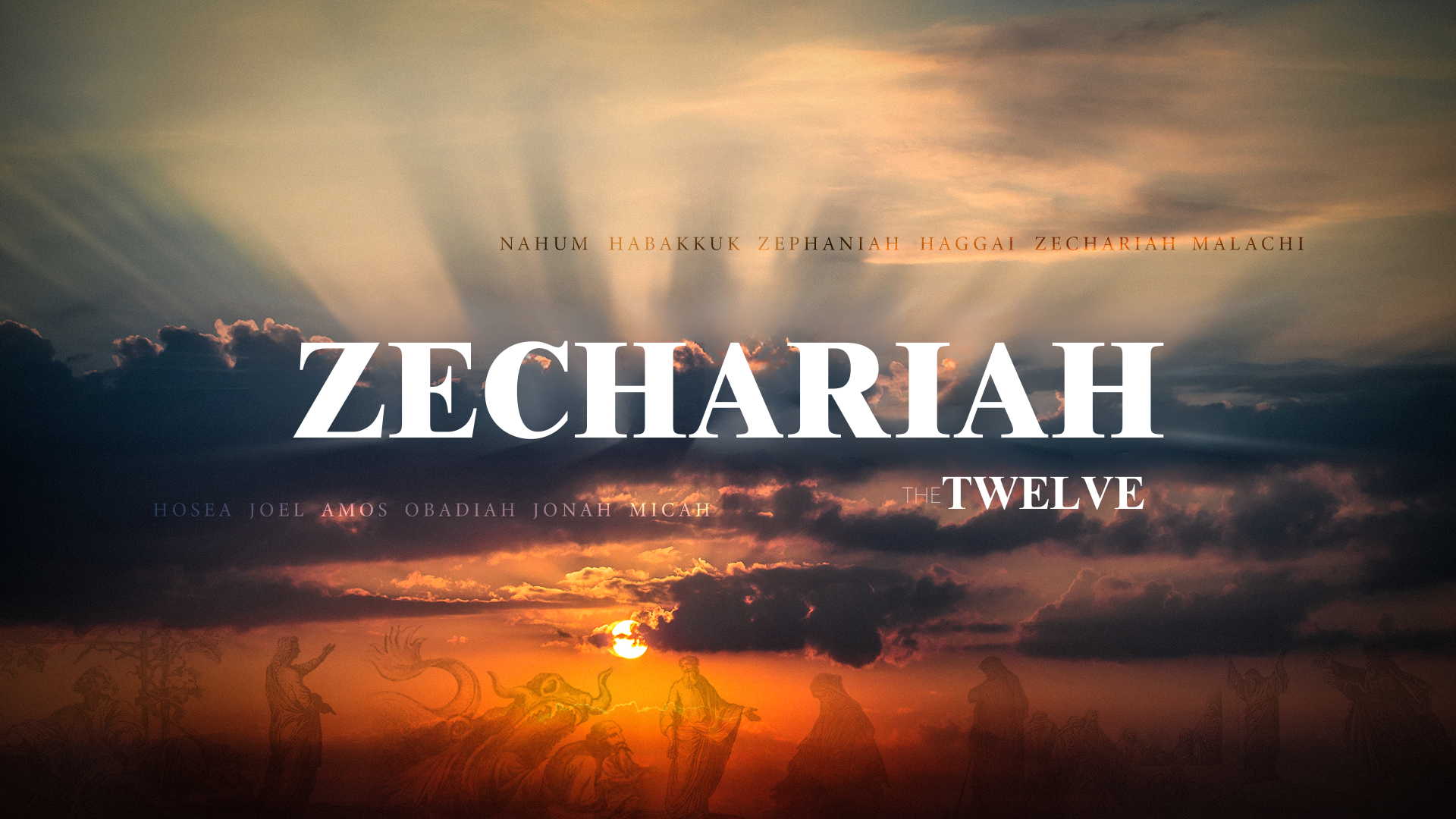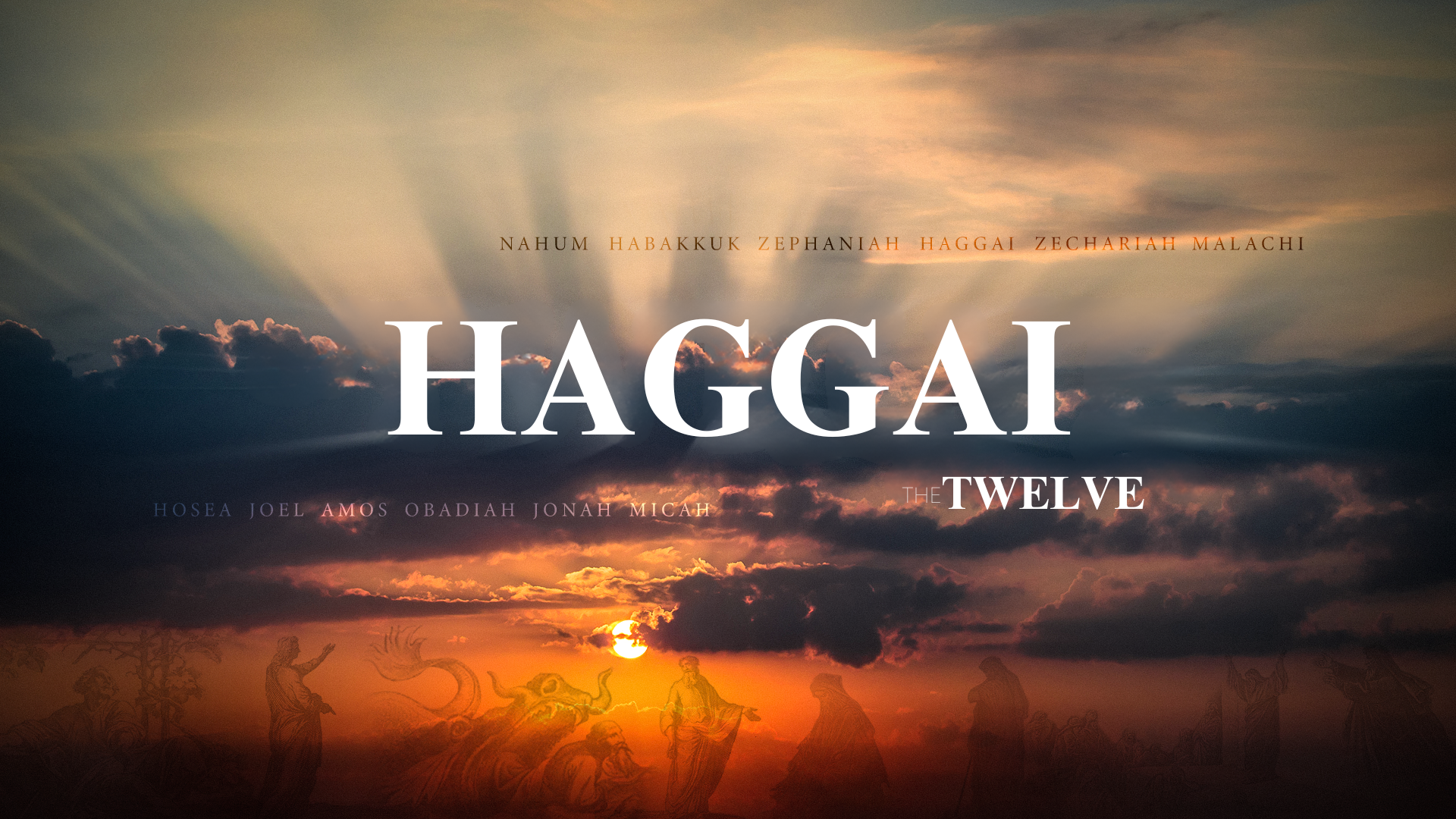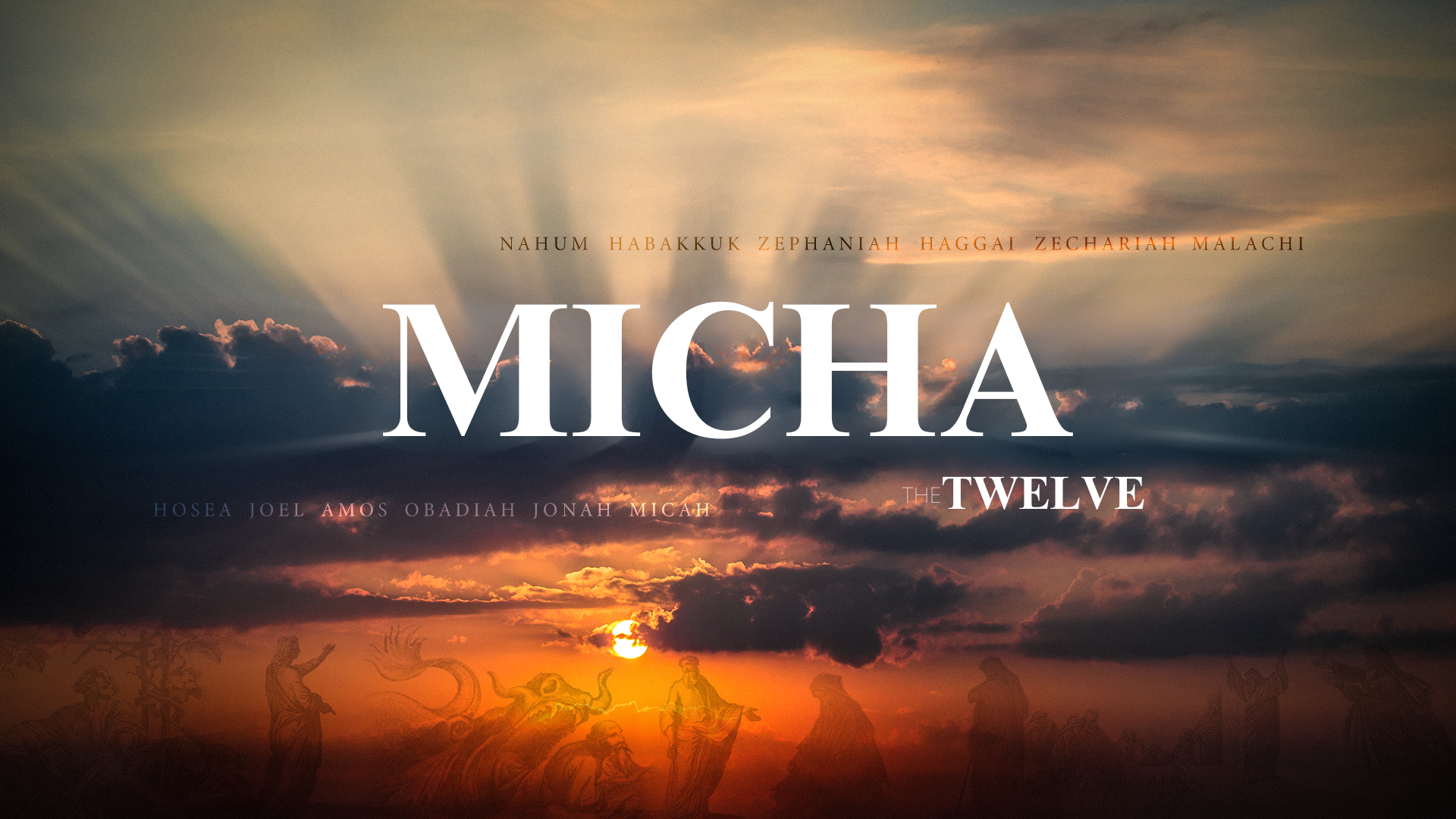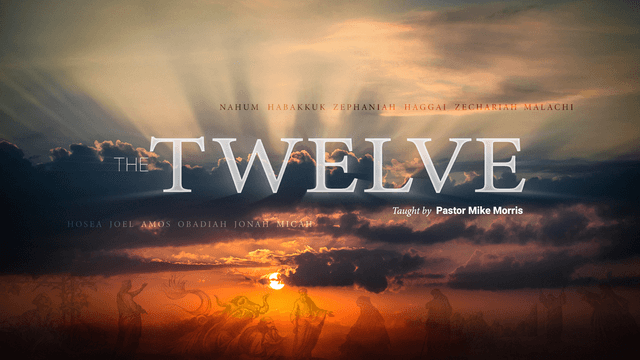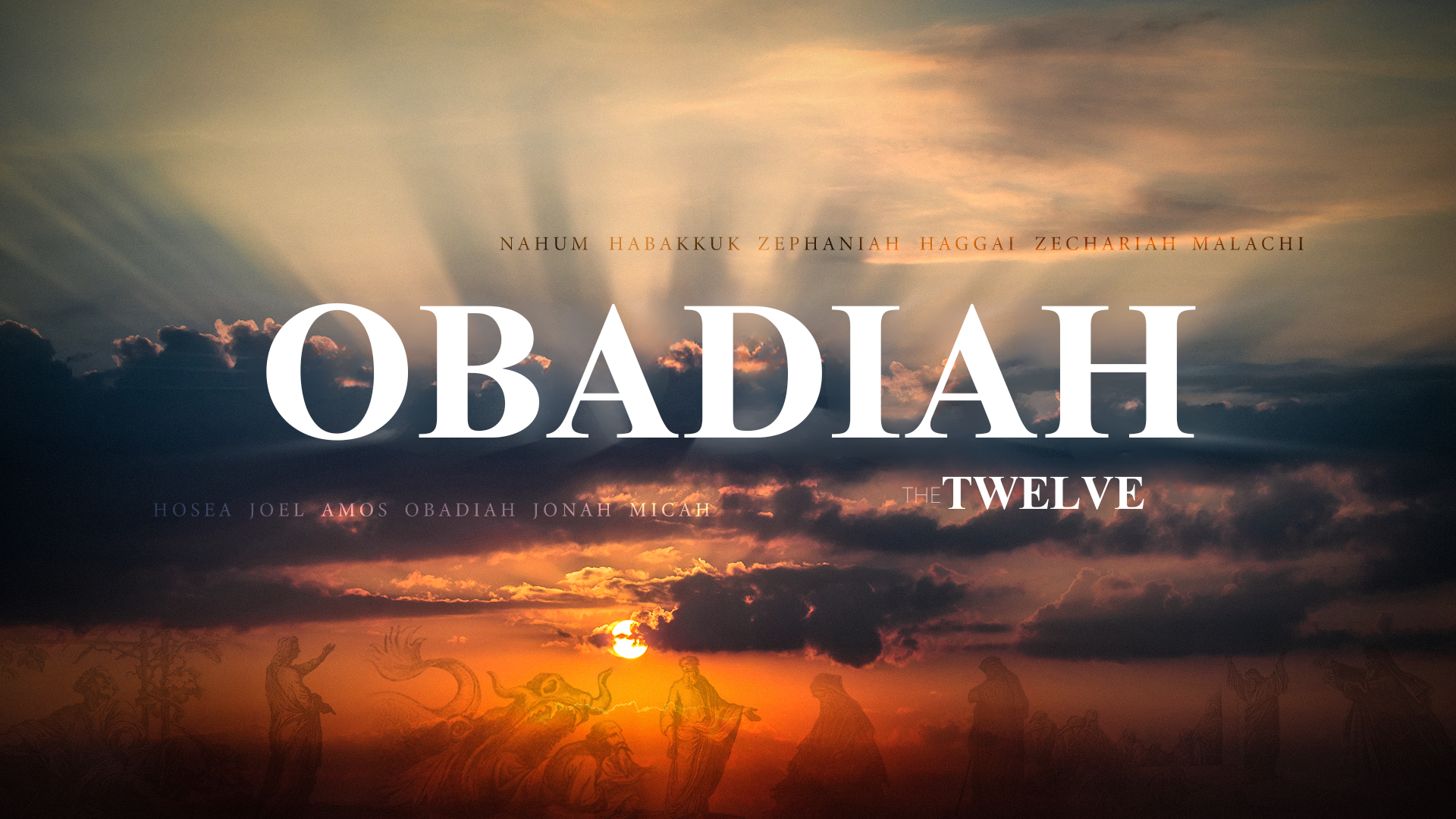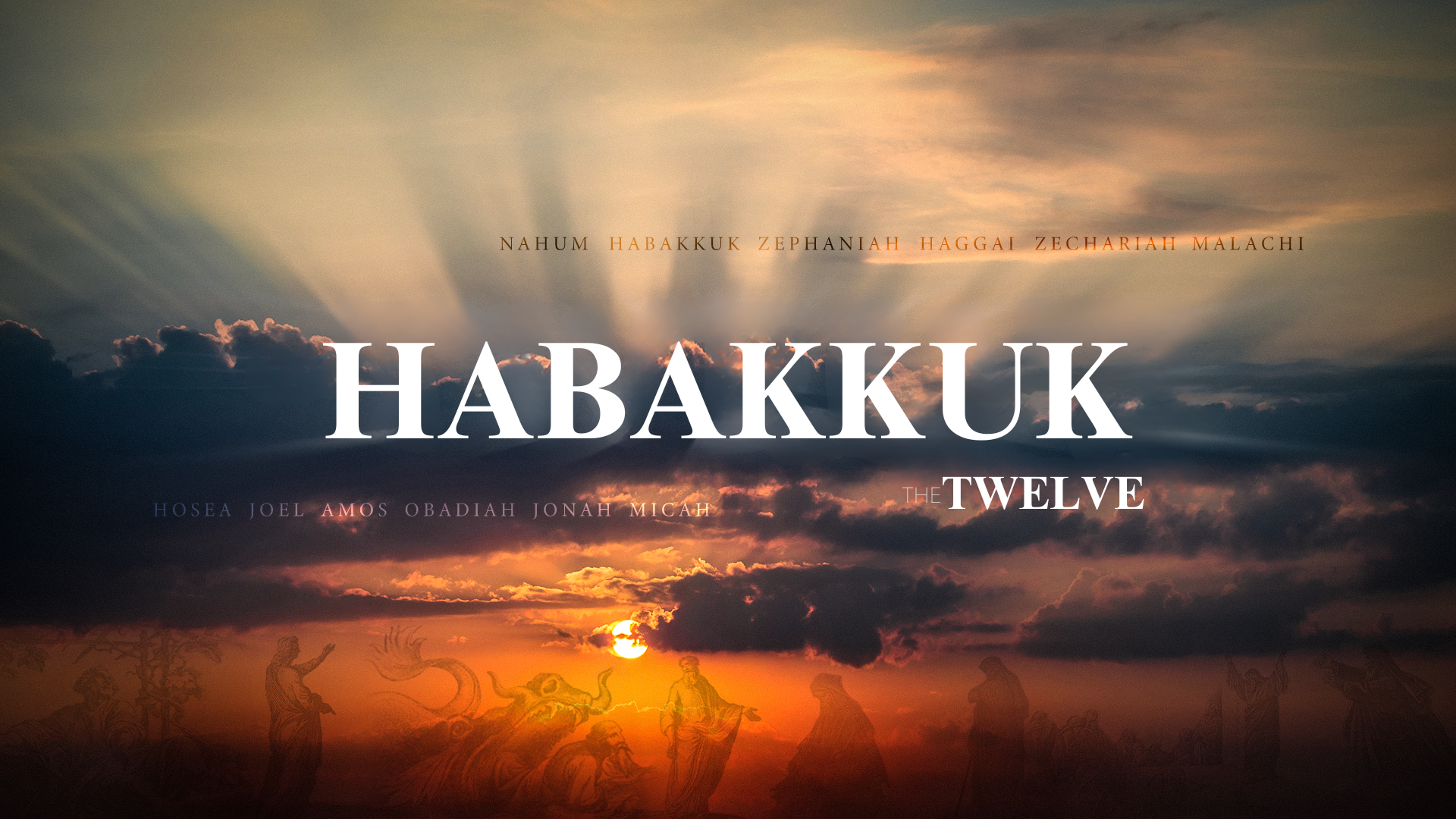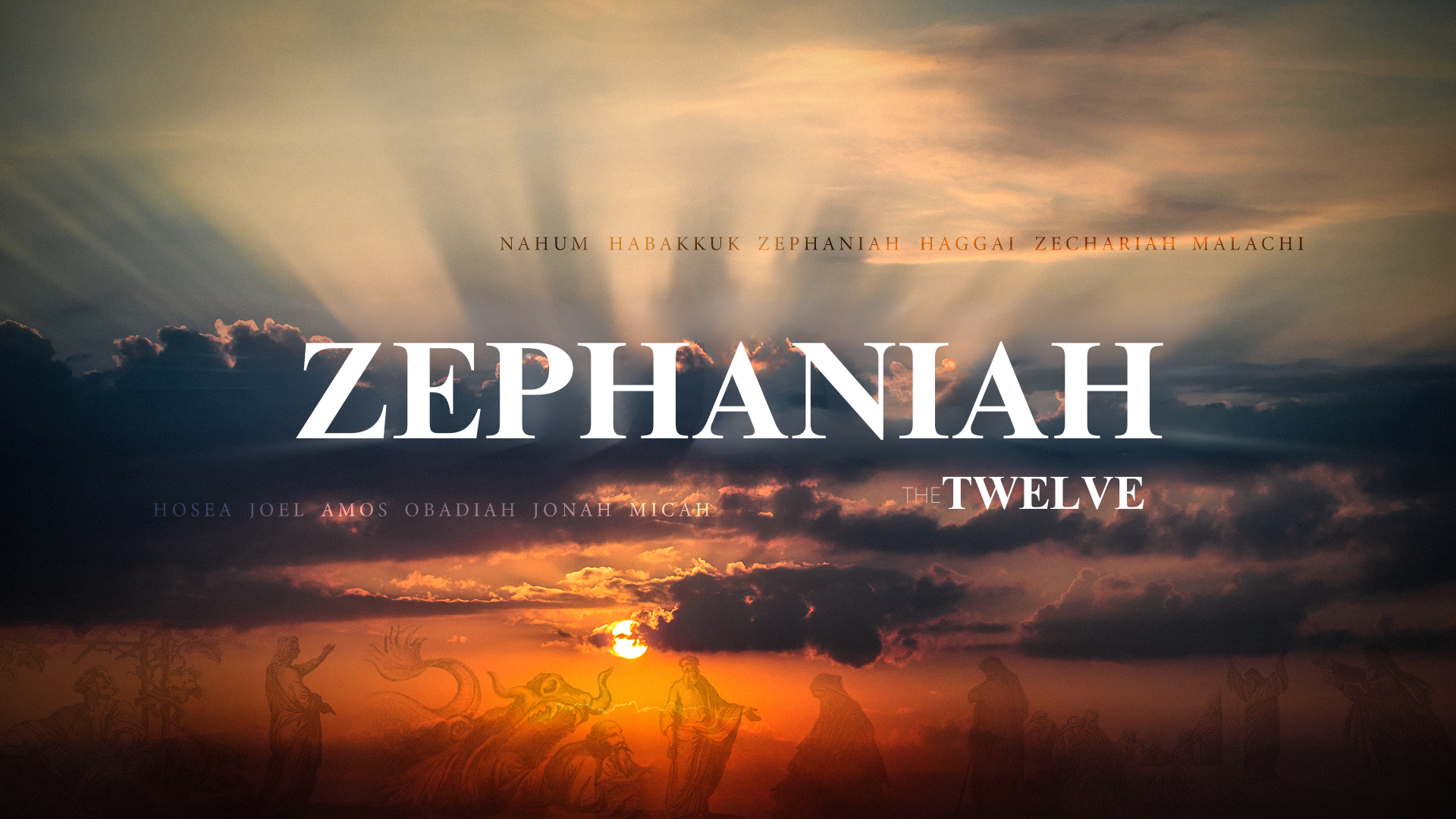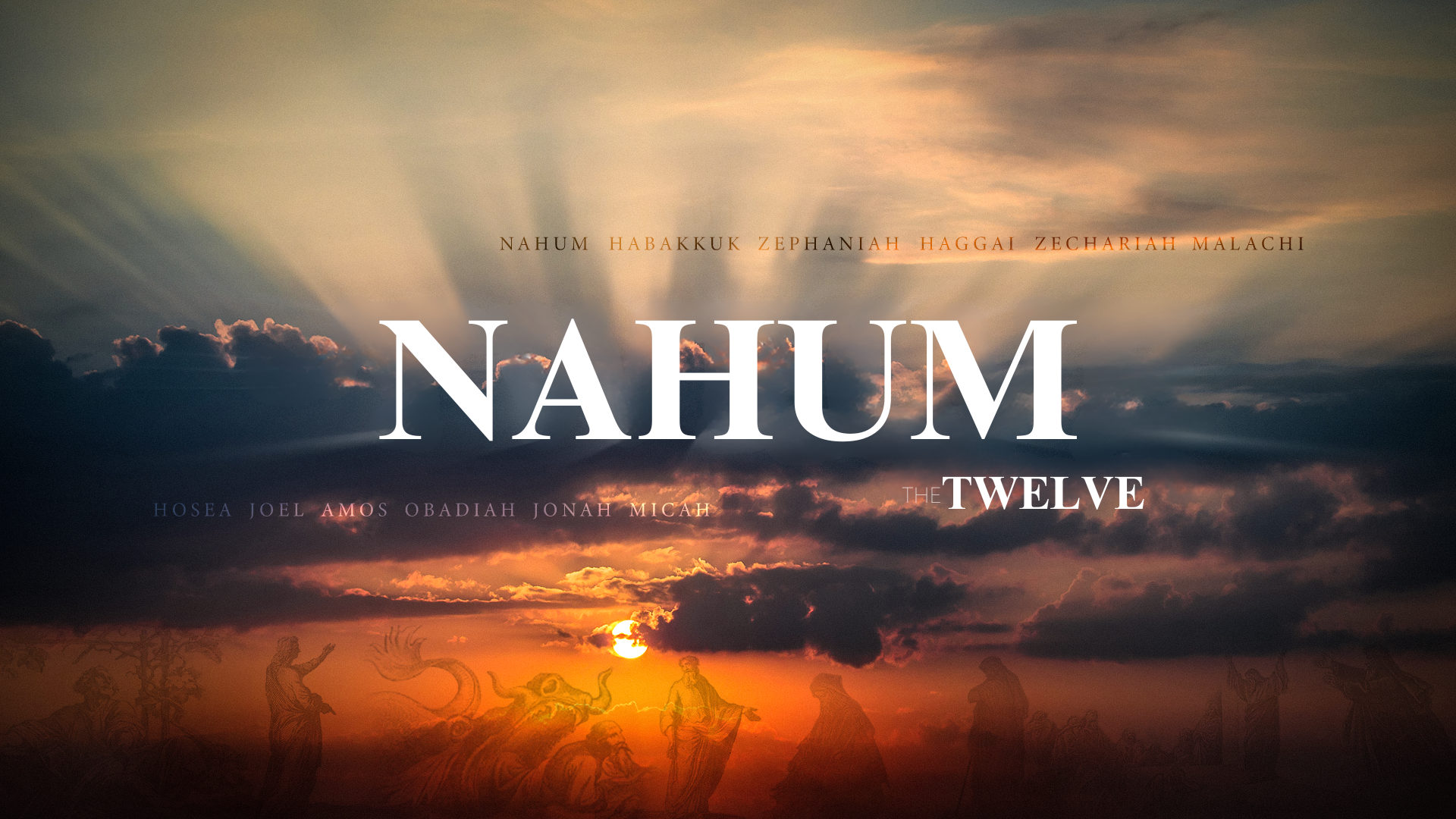INFO
MINISTRIES
TEACHINGS
CONNECT
Sunday Service 9am & 11am
Wednesday Service 7pm
(210) 920-6502
551 E Nakoma St.
San Antonio, TX 78216
MANUSCRIPT
Tonight, we continue our study of the prophecy of Zechariah. So far, we’ve covered an introduction to the book and the prologue, 1.1-6, and the first vision, about the Angel of the Lord among the myrtle trees. Next time, we turn to the third vision, the Man with the Measuring Line.
As we begin, let’s quickly review what we’ve learned so far in this book.
Verses 1.1-6 are God’s call to repentance and His promise to return to the people as they returned to Him. Verse 1.6 tells us the people did repent, opening the door for the eight encouraging visions of 1.7 through 6.8.
The first vision sets the stage for the rest. The Angel of the Lord, the Second Person of the Trinity, is riding a red horse and leading a company of angelic warriors, and intervening for His people. In response, the Father pledges to remember and bless His people, particularly Jerusalem.
But there is a phrase in that last passage, 1.15, that leads us to tonight’s vision. In the midst of this outpouring of comfort for Israel, Yahweh devotes one verse to the nations surrounding Israel, the Gentile world powers, those nations the angels reported as being “at ease,” and that verse says this: 15 I am exceedingly angry with the nations that are at ease; for while I was angry but a little, they furthered the disaster. Tonight, we examine what happens when God is “exceedingly angry” with the ungodly world powers oppressing His people.
Let’s jump into the text!
18 And I lifted my eyes and saw, and behold, four horns! 19 And I said to the angel who talked with me, “What are these?” And he said to me, “These are the horns that have scattered Judah, Israel, and Jerusalem.” 20 Then the Lord showed me four craftsmen. 21 And I said, “What are these coming to do?” He said, “These are the horns that scattered Judah, so that no one raised his head. And these have come to terrify them, to cast down the horns of the nations who lifted up their horns against the land of Judah to scatter it.”
The Four Horns
Let’s start from the beginning in verse 18.
Remember that Zechariah is being shown these eight visions in what must have been fairly rapid succession, all in a single night, so it isn’t surprising that as the second vision begins, he has to lift his eyes. But somehow Zechariah senses that the scene has changed from the angel among the myrtle trees, and the second vision dawns to his understanding and inner sight. And “behold, four horns!” .and Zechariah asks, “What are these?”
The angel replies but doesn’t define the meaning of “horn.” Instead, he describes what the horns did, using the prophetic past tense. Zechariah doubtless knew what the horns represented. Horns symbolized power and strength, whether the strength of animals as in Genesis 22, or God’s strength embodied by the king, as in Hannah’s prayer in I Samuel 2.10: The adversaries of the Lord shall be broken to pieces;
against them he will thunder in heaven.
The Lord will judge the ends of the earth;
He will give strength to His king
and exalt the horn of His anointed.”
Horns also came to symbolize pride and arrogance, as God speaks of judgment against the horn of the wicked. Psalm 75.2-5, 10:
“At the set time that I appoint
I will judge with equity.
3 When the earth totters, and all its inhabitants,
it is I who keep steady its pillars. Selah
4 I say to the boastful, ‘Do not boast,’
and to the wicked, ‘Do not lift up your horn;
5 do not lift up your horn on high,
or speak with haughty neck.’”
10 All the horns of the wicked I will cut off,
but the horns of the righteous shall be lifted up.
The interpreter angel’s description of what the horns do helps us more clearly understand what they are and their symbolic meaning. The angel explains, “These are the horns that have scattered Judah, Israel, and Jerusalem.” .these horns have “scattered” (Heb ‘zeh-rrah’), meaning to disperse, to cause to separate and go in different directions, the Jewish people, described here very broadly, including the southern and northern kingdoms, Judah and Israel, and the city of David, the true capital, Jerusalem.
At this point, for more understanding, we turn to a book of the Bible written almost 100 years before Zechariah – the book of Daniel, written sometime between 605 and about 580 BC under the reigns of Nebuchadnezzar of Babylon and Cyrus of Medo-Persia. Daniel's and Zechariah’s prophecies have much in common. They were visions, not oracles, were all received in the night, and were aided by an interpreter angel (perhaps the same one).
There are striking similarities between Daniel’s prophecies in chapters 2 and 7, and Zechariah’s prophecy here in chapter 1. they involve the same key elements: animal horns which represent the strength and might of Gentile nations; the number four figures prominently in both books; and the visions are repeated in three different forms, the repetition providing great emphasis to the message of God through the prophets.
Let’s examine Daniel 2.31-35: 31 “You saw, O king, and behold, a great image. This image, mighty and of exceeding brightness, stood before you, and its appearance was frightening. 32 The head of this image was of fine gold, its chest and arms of silver, its middle and thighs of bronze, 33 its legs of iron, its feet partly of iron and partly of clay. 34 As you looked, a stone was cut out by no human hand, and it struck the image on its feet of iron and clay, and broke them in pieces. 35 Then the iron, the clay, the bronze, the silver, and the gold, all together were broken in pieces, and became like the chaff of the summer threshing floors; and the wind carried them away, so that not a trace of them could be found. But the stone that struck the image became a great mountain and filled the whole earth.
In Daniel 2.37-45, the prophet gives the interpretation, speaking to Nebuchadnezzar, king of Babylon: 37 You, O king, .—you are the head of gold. 39 Another kingdom inferior to you shall arise after you, and yet a third kingdom of bronze, which shall rule over all the earth. 40 And there shall be a fourth kingdom, strong as iron, because iron breaks to pieces and shatters all things. And like iron that crushes, it shall break and crush all these. 41 And as you saw the feet and toes, partly of potter's clay and partly of iron, it shall be a divided kingdom, but some of the firmness of iron shall be in it, just as you saw iron mixed with the soft clay. 42 And as the toes of the feet were partly iron and partly clay, so the kingdom shall be partly strong and partly brittle. 43 As you saw the iron mixed with soft clay, so they will mix with one another in marriage, but they will not hold together, just as iron does not mix with clay. 44 And in the days of those kings the God of heaven will set up a kingdom that shall never be destroyed, nor shall the kingdom be left to another people. It shall break in pieces all these kingdoms and bring them to an end, and it shall stand forever, 45 just as you saw that a stone was cut from a mountain by no human hand, and that it broke in pieces the iron, the bronze, the clay, the silver, and the gold.
This first vision speaks of a great image in four parts, indicating four successive Gentile kingdoms, beginning with Babylon, the last one being of a mixed nature, made of iron and clay; these four kingdoms are crushed by a stone cut out of a mountain without hands, that is, by God, the stone representing the kingdom of Jesus Christ, the Messiah. The truth of four successive Gentile kingdoms is repeated in different imagery, in four beasts, in Daniel 7.2-8: 2 Daniel declared, “I saw in my vision by night, and behold, the four winds of heaven were stirring up the great sea. 3 And four great beasts came up out of the sea, different from one another. 4 The first was like a lion and had eagles' wings. Then as I looked its wings were plucked off, and it was lifted up from the ground and made to stand on two feet like a man, and the mind of a man was given to it. 5 And behold, another beast, a second one, like a bear. It was raised up on one side. It had three ribs in its mouth between its teeth; and it was told, ‘Arise, devour much flesh.’ 6 After this I looked, and behold, another, like a leopard, with four wings of a bird on its back. And the beast had four heads, and dominion was given to it. 7 After this I saw in the night visions, and behold, a fourth beast, terrifying and dreadful and exceedingly strong. It had great iron teeth; it devoured and broke in pieces and stamped what was left with its feet. It was different from all the beasts that were before it, and it had ten horns. 8 I considered the horns, and behold, there came up among them another horn, a little one, before which three of the first horns were plucked up by the roots. And behold, in this horn were eyes like the eyes of a man, and a mouth speaking great things.
As before, Daniel is given the interpretation, Daniel 7.15-18: 15: “As for me, Daniel, my spirit within me was anxious, and the visions of my head alarmed me. 16 I approached one of those who stood there and asked him the truth concerning all this. So he told me and made known to me the interpretation of the things. 17 ‘These four great beasts are four kings who shall arise out of the earth. 18 But the saints of the Most High shall receive the kingdom and possess the kingdom forever, forever and ever.’
Taken together with the vision of the great image made in four parts, Daniel’s vision of four great beasts drawn from the great sea by the four winds of heaven, and Zechariah’s vision of four horns, all represent the same truth: four Gentile world powers will arise – Babylon, Medo-Persia, Greece, and ancient Rome – and scatter the Jews, the people of God, through captivity, exile, and violence, causing them to be dispersed around the world: 18 And I lifted my eyes and saw, and behold, four horns! 19 And I said to the angel who talked with me, “What are these?” And he said to me, “These are the horns that have scattered Judah, Israel, and Jerusalem.”
Now, we turn to the second part of the vision.
The Four Craftsmen
Verses 20-21: 20 Then the Lord showed me four craftsmen. 21 And I said, “What are these coming to do?” He said, “These are the horns that scattered Judah, so that no one raised his head. And these have come to terrify them, to cast down the horns of the nations who lifted up their horns against the land of Judah to scatter it.”
Having seen the four horns, now the scene changes to four “craftsmen” in the English Standard Version. Other translations use a variety of other words, including “workers,” “smiths,” “blacksmiths,” “carpenters,” and “metalworkers” . The word, ha-raash, is a Hebrew word for what we might call a craftsman or artisan, a worker skilled in putting things together or taking them apart (both purposes are included in Scriptural use).
Now Zechariah turns back to the interpreter angel with another question: “What are these coming to do?” The vision of the horns echoed the two visions of the former prophet, Daniel, but this part of the vision was new to Zechariah, so he sought the meaning and understanding of this new revelation. Who are these craftsmen and what is their purpose, and especially what is their relationship to the horns?
The angel affirms again the purposes of God to chasten the people of Israel for their sins and that He will use these Gentile nations to accomplish that. As the angel says, to scatter Judah, so that no one raised his head. The sense of the Hebrew word is that the people of Judah will experience the punishment of God through the actions of these horns, these successive Gentile kingdoms. But there was One who would ultimately lift the heads of the people of Israel, their strong Advocate whom we saw in the first vision, the Angel of the Lord standing among the myrtle trees to save them, Jesus Christ.
God tells Zechariah through this vision that He will judge the empires through whom He acts to chasten His people through these “craftsmen.”So, can we know more about them? Yes. We will know them by their actions. The angel says. And these have come to terrify them, to cast down the horns of the nations who lifted up their horns against the land of Judah to scatter it.” To expand that sentence a bit, these craftsmen have come as the instruments of God’s wrath, acting from God’s exceeding anger, as we saw in v. 15, to cause these wicked empires to tremble, to cast them down, throw them to the ground, to defeat and overcome the power and strength of the horns who scattered and furthered the disaster against Israel, the four successive Gentile kingdoms who caused such great suffering of the people, including their dispersion throughout the Gentile world.
But who were these “craftsmen”? Who could overthrow these great beasts seen by Daniel? Who could crush their power?
Here’s the answer from Scripture: the sovereign God would use pagan kings, the empires of men, to destroy each other, to fulfill His good purposes to both chasten and save His people, Israel. As Daniel prays in 2.20-21, “Blessed be the name of God forever and ever,
to whom belong wisdom and might.
21 He changes times and seasons;
He removes kings and sets up kings;
He gives wisdom to the wise
and knowledge to those who have understanding;
22 He reveals deep and hidden things;
He knows what is in the darkness,
and the light dwells with Him. Let’s look at the details.
Zechariah had already seen the fulfillment of the actions of the first craftsman. It had been prophesied by Jeremiah and had already come to pass, for God promised to judge the Babylonian empire through the Medo-Persian empire, as He says in Jeremiah 50: (v 11) “Sharpen the arrows! Take up the shields! The Lord has stirred up the spirit of the kings of the Medes, because His purpose concerning Babylon is to destroy it, for that is the vengeance of the Lord, the vengeance for His temple. (v 24) “I will repay Babylon and all the inhabitants of Chaldea before your very eyes for all the evil that they have done in Zion, declares the Lord. (vs 28-29) Prepare the nations for war against her, the kings of the Medes, with their governors and deputies, and every land under their dominion. 29 The land trembles and writhes in pain, for the Lord's purposes against Babylon stand, to make the land of Babylon a desolation, without inhabitant.
Nebuchadnezzar and the mighty Babylonian empire were indeed defeated by the Medo-Persian empire, as recorded in Daniel 5.24-28.24 “Then from his presence the hand was sent, and this writing was inscribed. 25 And this is the writing that was inscribed: Mene, Mene, Tekel, and Parsin. 26 This is the interpretation of the matter: Mene, God has numbered the days of your kingdom and brought it to an end; 27 Tekel, you have been weighed in the balances and found wanting; 28 Peres, your kingdom is divided and given to the Medes and Persians.” This happened in 539 BC, nineteen years before Zechariah saw his visions, just as it was prophesied by Jeremiah; the Lord brought about the overthrow of Babylon to lead to the restoration of the people of Judah back to their land, the rebuilding of Jerusalem and God’s Temple.
Daniel 8.5-8 prophesies Greece’s conquest of the Medo-Persian empire. Daniel’s vision is of a ram with two horns, one larger than the other, representing Medo-Persia, and a male goat, representing Greece, with a conspicuous strong horn, representing Alexander the Great. Alexander defeated Darius III at the Battle of Gaugamele in 331 BC, ending the Medo-Persian empire and establishing the Hellenistic world and culture.
The third craftsman was ancient Rome, the iron portion of the great image of Daniel 2, and described in the vision of Daniel 7 as a fourth beast, terrifying and dreadful and exceedingly strong. It had great iron teeth; it devoured and broke in pieces and stamped what was left with its feet. This fourth beast, which is also the third craftsman, is different from the others. The text gives unique descriptions of ancient Rome and blends them with descriptions of the revived Roman empire of the end of days, with ten horns, found in Daniel 7 and the book of Revelation.
As for the fourth craftsman, we know who that is. Daniel 2 describes both the effects and identity of the world’s final kingdom and the King of Kings who reigns in it. Jesus Christ, the Messiah of Israel and the Savior of the world. He is the stone cut from a mountain by no human hand. The God of heaven sets up a kingdom that shall never be destroyed nor left to another people . King Jesus will reign forever and ever!
So as the second vision ends, we know have two truths clearly in view: first, God remembers His people. He will not forget His lowly myrtle grove in the deep, He will not forget those who are His.
We are reminded of Isaiah 49.15-16.
15 “Can a woman forget her nursing child,
that she should have no compassion on the son of her womb?
Even these may forget,
yet I will not forget you.
16 Behold, I have engraved you on the palms of my hands;
your walls are continually before me.
But equally encouraging is the lesson of the second vision, that God also never forgets those who oppress and persecute and scatter His people. As we saw in 1.15, He was 15 .exceedingly angry with the nations that are at ease; for while I was angry but a little, they furthered the disaster. And His judgment has fallen and will fall upon the ungodly Gentile world powers who were guilty of scattering Israel, Judah, and Jerusalem. The Advocate of Israel, Jesus the Messiah, has brought His promised judgment to the great and mighty empires of the world. They no longer exist, but Israel, that small and oppressed nation, still stands and will stand forever, for their God will make it so.
God chastens those whom He loves, but He will ultimately save His people and punish those who are their oppressors.
Jeremiah 30
For I am with you to save you,
declares the Lord;
I will make a full end of all the nations
among whom I scattered you,
but of you I will not make a full end.
I will discipline you in just measure,
and I will by no means leave you unpunished.
No matter where the Jews are, from there they will return to the land.
“Hear the word of the Lord, O nations,
and declare it in the coastlands far away;
say, ‘He who scattered Israel will gather him,
and will keep him as a shepherd keeps his flock.’
And the oppressing nations, those who scattered them, will be judged.
Behold the storm of the Lord!
Wrath has gone forth,
a whirling tempest;
it will burst upon the head of the wicked.
24 The fierce anger of the Lord will not turn back
until he has executed and accomplished
the intentions of his mind.
In the latter days you will understand this.
So how can we summarize the truths of the second vision?
God is a just and sovereign God. He is the King over all the affairs of men.
God will chasten His people to draw them unto holiness, for that is His purpose.
God will protect Israel as one protects the “apple of His eye” (Zechariah 2.8)
God will eventually judge the wicked. No one ever evades His justice.
The last stanza of Longfellow’s poem “Christmas Bells” says this:
Then pealed the bells more loud and deep:
"God is not dead, nor doth He sleep;
The Wrong shall fail,
The Right prevail,
With peace on earth, goodwill to men."
And so it shall be.

Taught by Mike Morris
Associate Pastor of Verse By Verse Fellowship
The Twelve Series
